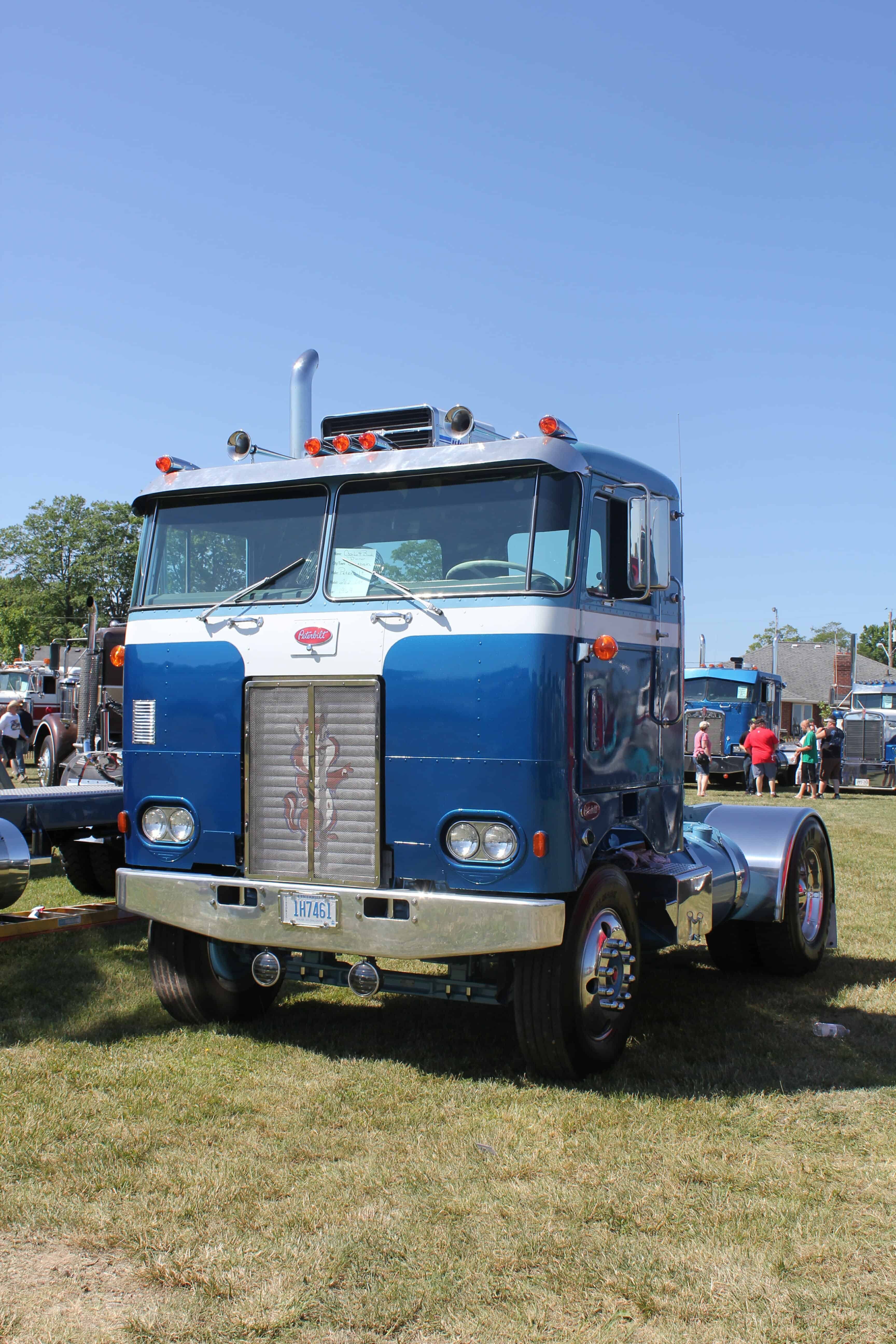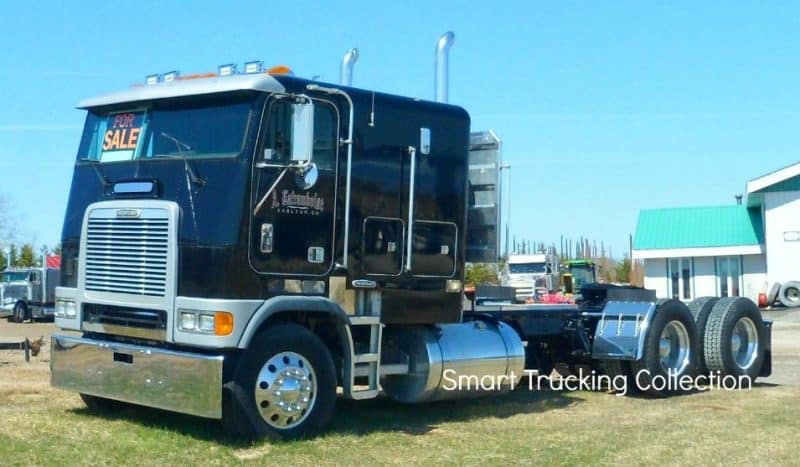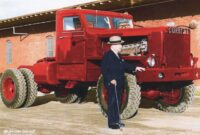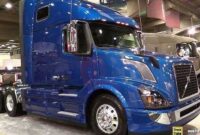Old Cabover Semi Trucks For Sale: A Comprehensive Guide to Owning a Piece of Road History pickup.truckstrend.com
The rumble of a big diesel, the distinctive flat nose, and the commanding presence on the highway – few vehicles evoke as much nostalgia and admiration as the old cabover semi truck. Once the undisputed kings of the road, these "Cab-Over-Engine" (COE) designs were workhorses that shaped the trucking industry for decades. Today, while modern conventional trucks dominate, a vibrant and passionate market exists for old cabover semi trucks for sale, appealing to everyone from dedicated restorers and classic vehicle collectors to small business owners seeking a unique, utilitarian workhorse, or even those looking for a distinctive foundation for a custom build.
This comprehensive guide delves into the world of old cabover semi trucks, exploring their enduring appeal, what to consider when buying, where to find them, and the practicalities of owning one of these iconic machines.
Old Cabover Semi Trucks For Sale: A Comprehensive Guide to Owning a Piece of Road History
The Enduring Appeal of the Cabover
The cabover design, where the driver’s cab sits directly above the engine, was born out of necessity. Strict length laws in the mid-20th century, particularly in the United States, favored shorter trucks to maximize trailer length. This configuration offered superior maneuverability in tight urban areas and shipping docks, along with a shorter overall wheelbase. While deregulation in the 1980s led to the decline of the cabover in North America, its legacy lives on.
Their appeal today stems from several factors:
- Nostalgia and Classic Aesthetics: For many, old cabovers represent a golden era of trucking. Their distinctive, often boxy or streamlined designs, prominent grilles, and robust build quality exude a timeless charm that modern trucks simply can’t replicate. They are a tangible link to trucking history.
- Practicality for Specific Uses: Despite their age, some cabovers still offer practical advantages. Their inherent maneuverability makes them ideal for tight spaces, urban delivery, or specialized applications where overall length is critical.
- Collector’s Item and Investment: Well-preserved or expertly restored cabovers, especially rarer models or those from iconic manufacturers like Kenworth, Peterbilt, or Mack, can be significant collector’s items, appreciating in value over time.
- Customization Potential: The unique profile of a cabover lends itself well to customization, from period-correct restorations to modern hot rod trucks or even unconventional motorhome conversions.

What to Look For: Key Considerations When Buying an Old Cabover
Purchasing an old cabover is not the same as buying a used car. It requires a keen eye, patience, and a realistic understanding of potential challenges.

Condition is Paramount: This is the single most critical factor.
- Frame and Chassis: Inspect for rust, cracks, or previous frame repairs. A solid frame is foundational. Pay attention to spring hangers, crossmembers, and fifth wheel mounting areas.
- Rust: Cabovers are notorious for rust, especially in the cab structure, floorboards, and fender wells, due to their construction and exposure. Extensive rust can make a truck a parts donor rather than a restorable project.
- Engine: Inquire about the engine’s history. Look for excessive smoke (blue/black/white), strange noises, oil leaks, and signs of poor maintenance. Popular engines like Cummins (NTC, Big Cam), Detroit Diesel (Series 60, 8V-71), and Caterpillar (3406) are generally robust, but even they have limits.
- Transmission and Drivetrain: Check for smooth shifting (if manual), grinding gears, and unusual noises from the differential. Inspect driveshafts and U-joints.
- Brakes and Tires: Assess brake component wear (drums, shoes, air lines) and tire condition. Tires alone can be a significant cost.
- Electrical System: Old wiring can be a nightmare. Check lights, gauges, and accessory functionality.
- Cab Interior: While aesthetics are secondary to mechanicals, a well-preserved interior can indicate better overall care. Look for severe water damage or structural issues.

-
Engine Type and Parts Availability: Certain engines are easier and cheaper to maintain due to widespread parts availability. Research the specific engine in the truck you’re considering. More obscure or very early engines might require specialized knowledge and parts sourcing.
-
Documentation and History: A clear title is non-negotiable. Any available maintenance records, even if sparse, can offer insights into the truck’s past life.
-
Originality vs. Modifications: Decide if you want a historically accurate restoration or a truck that has been modified for modern use (e.g., engine swaps, updated electronics). Modifications can sometimes add value or utility but may deter purists.
Where to Find Them: Navigating the Market
The market for old cabovers is niche but active, requiring a proactive search.
- Online Marketplaces: Websites like eBay, Facebook Marketplace, and specialized heavy truck classifieds (e.g., TruckPaper.com, MyLittleSalesman.com) are common starting points. Look for dedicated classic truck groups on social media.
- Specialized Dealers: A few dealers specialize in antique and classic commercial vehicles. While prices might be higher, these trucks are often vetted or have undergone some level of restoration.
- Auctions: Heavy equipment and vehicle auctions (online and in-person) can yield hidden gems, but require quick decision-making and a thorough pre-inspection if possible.
- Word of Mouth and Networking: Attending truck shows, joining online forums, and talking to other enthusiasts can lead to leads on trucks not publicly advertised.
- Junkyards and Salvage Yards: For parts trucks or deeply discounted projects, these can be goldmines, but often require significant effort to extract a vehicle.
Budgeting for Your Cabover Dream: Beyond the Purchase Price
The purchase price is often just the beginning. Factor in these additional costs:
- Transportation: If buying remotely, arrange for heavy-haul transport. This can be substantial.
- Restoration/Repair Costs: Almost every old truck will require some level of repair or restoration. Be realistic about your budget for parts, labor, and specialized services (e.g., sandblasting, paint, engine rebuilds).
- Parts Availability and Cost: For some models, parts can be scarce and expensive. Factor in potential fabrication costs for unobtainable components.
- Insurance and Registration: Research classic vehicle insurance options, which can sometimes be more affordable than standard commercial insurance if the truck is not used for revenue generation.
- Fuel and Maintenance: Old diesels can be thirsty, and ongoing maintenance is crucial to keep them reliable.
Types and Popular Models
While countless cabover models existed, some stand out in the classic truck community:
- Kenworth K100: An icon of American trucking, known for its robust build and timeless styling. Various generations exist, from the "Bullnose" to the Aerodyne.
- Peterbilt 352: Another highly sought-after classic, celebrated for its distinctive "coffin sleeper" and elegant lines.
- Freightliner Cabover (e.g., FLC, FLB series): Often seen as the more utilitarian choice, Freightliners were numerous and reliable, making parts somewhat easier to find for later models.
- International Transtar: A popular workhorse, available in various configurations.
- Mack F-Series: Known for their durability and distinctive Mack powertrain, often sought by enthusiasts.
- White-Freightliner / White-GMC: Later iterations that combined brands, offering a blend of classic design with slightly newer components.
Each model has its quirks, strengths, and a dedicated following. Researching specific models will help narrow your search.
Restoration vs. Road-Ready: Choosing Your Path
When buying an old cabover, you’ll generally encounter three categories:
- Project/Parts Truck: These are typically non-running, heavily rusted, or incomplete. They are suitable for experienced restorers with significant time and budget, or for those needing specific parts for another truck.
- Running/Needs Work: The most common category. These trucks usually run and drive but require substantial mechanical attention, bodywork, and interior refresh to be roadworthy and presentable. This is often the best balance for those looking for a restoration candidate that isn’t a complete basket case.
- Good Original Condition / Fully Restored: These trucks command the highest prices. "Good original" means well-preserved with minimal rust and all original components. "Fully restored" means a professional, frame-off restoration has been completed. These are often show trucks but can also be reliable drivers.
Tips for a Successful Purchase
- Do Your Homework: Research the specific makes and models you’re interested in. Understand common issues and parts availability.
- Inspect Thoroughly: If possible, inspect the truck in person. Bring a knowledgeable friend or hire a heavy-duty mechanic for a pre-purchase inspection. Look under, over, and inside every component.
- Negotiate Wisely: Prices for old cabovers are highly variable. Don’t be afraid to negotiate, especially if you identify issues that require significant investment.
- Factor in All Costs: Create a realistic budget that includes the purchase price, transportation, repairs, parts, and ongoing maintenance.
- Be Patient: Finding the right old cabover can take time. Don’t rush into a purchase.
- Understand Legalities: Ensure the title is clear and that you understand the process for transferring ownership and registering the vehicle in your state/country.
Potential Challenges and Solutions
- Rust: The biggest enemy. Solution: Thorough inspection, professional rust repair (cutting out and welding in new metal), and diligent rust prevention post-purchase.
- Parts Scarcity: For very old or rare models, parts can be hard to find. Solution: Network with enthusiasts, scour online forums, visit specialized salvage yards, explore reproduction parts manufacturers, or consider custom fabrication.
- Mechanical Issues: Old engines and transmissions will eventually need attention. Solution: Find a reputable heavy-duty mechanic specializing in older diesels, or be prepared to learn and do some work yourself.
- Transportation: Moving a non-running semi is expensive. Solution: Factor professional heavy-haul transport into your budget, or ensure the truck is capable of being driven safely if you plan to do so.
- Financing: Traditional auto loans are rarely available for very old, non-commercial vehicles. Solution: Be prepared for a cash purchase or explore personal loans.
Price Table: Old Cabover Semi Trucks For Sale (Estimated Ranges)
Prices for old cabover semi trucks vary wildly based on make, model, year, engine, overall condition, rarity, and location. This table provides estimated ranges to give you a general idea.
| Condition Category | Description | Estimated Price Range (USD) | Notes |
|---|---|---|---|
| Project/Parts Truck | Non-running, significant rust, major mechanical issues, incomplete. | $2,000 – $10,000 | Ideal for experienced restorers or those needing parts. Requires substantial investment in time and money. Often requires heavy-haul transport. |
| Running / Needs Work | Starts and drives, but requires extensive mechanical repairs, bodywork, or interior refresh. | $10,000 – $35,000 | Most common category for entry-level restorations. Hidden costs can quickly add up. Best for buyers with some mechanical aptitude or a good budget for repairs. |
| Good Original Condition | Mostly complete, minimal rust, original engine/transmission, well-maintained but not fully restored. | $35,000 – $75,000 | Rare finds. May still need some mechanical refreshing or cosmetic attention. Can be driven with care. |
| Fully Restored / Show Quality | Frame-off restoration, excellent paint, fully functional, show-ready condition. | $75,000 – $200,000+ | Top-tier vehicles, often commissioned or restored by professionals. Represent significant investment and craftsmanship. Often collector’s items. |
Factors Influencing Price:
- Make/Model: Kenworth K100 and Peterbilt 352 generally command higher prices than Freightliners or Internationals of similar condition.
- Year: Earlier models (pre-1970s) can be rarer and more valuable.
- Engine/Transmission: Desirable, strong-running engines (e.g., Cummins N14, Detroit 8V-71) can increase value.
- Rarity: Unique configurations, limited production runs, or historically significant trucks will fetch more.
- Documentation: Provenance, maintenance records, and clear title add value.
- Location: Prices can vary regionally based on supply and demand.
Frequently Asked Questions (FAQ)
Q1: Why buy an old cabover instead of a modern truck?
A1: Old cabovers appeal due to nostalgia, unique aesthetics, historical significance, and sometimes better maneuverability for specific tasks. They offer a tangible connection to trucking history and can be a rewarding restoration project or a distinctive work vehicle.
Q2: Are parts hard to find for old cabovers?
A2: It depends on the make, model, and year. For popular models like Kenworth K100 or Peterbilt 352, many mechanical parts (engine, transmission, axles) are still available through aftermarket suppliers or salvage yards. Body panels and interior components can be much harder to find, sometimes requiring custom fabrication. Networking with enthusiast groups is crucial.
Q3: Can old cabovers still be used commercially?
A3: Yes, many old cabovers are still used commercially, especially by owner-operators or small businesses for specialized hauling, heavy equipment transport, or local delivery where maneuverability is key. However, they may not meet modern emissions standards for all areas and fuel economy will be lower than modern trucks.
Q4: What’s the typical fuel economy of an old cabover?
A4: Fuel economy varies greatly depending on the engine, transmission, load, and terrain, but generally, old cabovers are less fuel-efficient than modern trucks. Expect anywhere from 4-7 MPG (miles per gallon), compared to 6-9 MPG or higher for contemporary models.
Q5: How much does a full restoration cost?
A5: A comprehensive, frame-off restoration can easily cost anywhere from $50,000 to $150,000 or more, not including the purchase price of the truck. This includes engine/drivetrain rebuilds, full bodywork and paint, interior restoration, new wiring, brakes, suspension, etc. It’s a significant investment in time and money.
Q6: Are old cabovers comfortable to drive?
A6: Comfort is subjective and varies by model. Compared to modern trucks with air-ride cabs and advanced ergonomics, old cabovers can be rougher, noisier, and offer fewer amenities. However, many drivers appreciate the direct feel of the road and the commanding view from the cab. Later models often had air-ride seats, improving comfort.
Q7: What’s the difference between a "classic" and a "later model" old cabover?
A7: "Classic" typically refers to pre-1980s models (like the early Kenworth K100 or Peterbilt 352) that embody the aesthetic and engineering of their era. "Later model" old cabovers (e.g., 1980s-early 1990s Freightliner FLB, Volvo White GMC) are still old but represent a transitional period before conventional trucks fully dominated. They might offer slightly more modern features but less "classic" appeal.
Conclusion: Driving History Forward
Owning an old cabover semi truck is more than just acquiring a vehicle; it’s embracing a piece of American road history. Whether you’re a seasoned collector, an aspiring restorer, or simply someone who appreciates the unique character of these iconic machines, the market for old cabovers offers a diverse range of opportunities. While they demand attention, resources, and a willingness to tackle challenges, the reward of bringing a piece of the past back to life, or putting a distinctive workhorse back on the road, is immeasurable. With careful research, a realistic budget, and a passion for these enduring giants, your dream of owning an old cabover can become a fulfilling reality.



